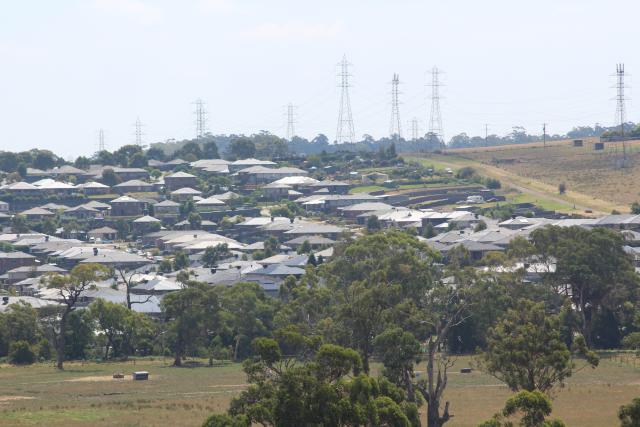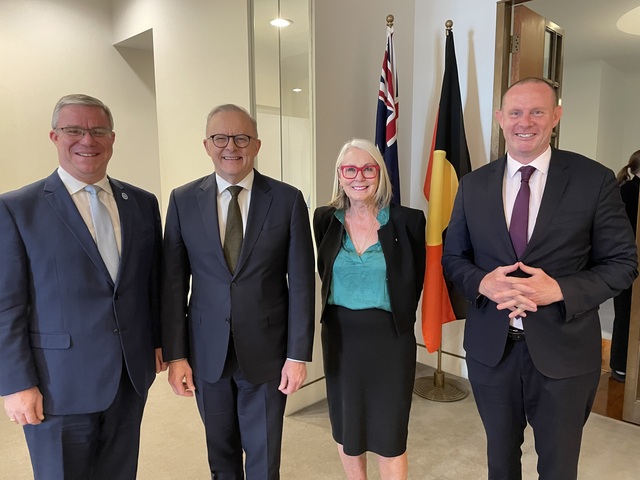The Albanese Government is in action and reform mode at present. The federal officials I’m talking too are genuinely pumped that they’re engaged in meaningful work after years of neglect and marginalisation.
Each passing month sees new agendas being added. At the moment it’s defence spending, pharmaceutical prescriptions, domestic gas supply, immigration reform, housing supply and affordability, infrastructure investment. And the May Budget lays out more fields for attention.
I hope I’m wrong but much of this reform agenda risks being glib and superficial. In this context, housing and infrastructure are two examples.
Housing
The National Cabinet meeting in Brisbane (28 April) stated that in the next six months Planning Ministers, working with the ALGA, will outline reforms to increase housing supply and affordability. And the communique mentioned initiatives ahead of the proposed reform work, specifically:
* Introducing reforms to strengthen renters’ rights across the country.
* Delivering the Housing Australia Future Fund and expanding the capacity of the Affordable Housing Bond Aggregator by expanding the liability cap by $2 billion.
* Increasing the depreciation rate from 2.5 per cent to 4 per cent per year for eligible new build-to-rent projects where construction commences after 9 May 2023.
* Reducing the withholding tax rate for eligible fund payments from managed investment trusts to foreign residents on income from newly constructed residential build-to-rent properties after 1 July 2024 from 30 to 15 per cent.
Well this is Treasury-inspired gibberish. It’s important that the ALGA and other players can formulate substantive Action Agendas that people can see and understand.
There are two Action Agendas in the housing area that could be woven into a federal-state policy framework.
1. Model projects of medium density housing
At the moment, increasing urban land supply is mainly reflected in thousands of quarter acre blocks on greenfield sites across outer metropolitan council areas. More urban sprawl, environmental blow-back, long wait times for infrastructure and retail outlets, long travel times.
When I ask town planners the rationale for this, it’s invariably ‘that’s what the market wants’. I have a hunch that the so-called market isn’t fully aware of other options.
My suggestion is that land agencies and local councils should be embracing model projects of medium density housing as part of a major push to offer a wider range of housing alternatives. Top of the list should be residential developments comprising a collection of classy 3-4 story apartment blocks, with nearby gyms, swimming pools, health centres, child minding centres, tennis courts, restaurants.
The Homebush area in Sydney is an example, but there are scores of them in outer Paris and London, where local councils are partnering with land developers and commercial businesses to create best practice life-work habitats. If you’re heading to Paris, there is a marvellous example 15km out at Versailles. Google ‘Parly 2 estate’ – I lived there for four years.
2. Relocation incentives
State government incentives for the location of newly-arrived migrants to regional areas are offered from time to time with varying results.
If they’re really serious, an Action Agenda should involve a federal-state program offering regional relocation incentives for city dwellers. There should be a parallel program of incentives for companies to also relocate, thus providing the necessary jobs. There are valid precedents overseas. Local councils should be at the centre of such an arrangement given their knowledge of local business activity and labour markets.
These incentives don’t need to be costly – the aim should be to give city-based businesses a final reason to relocate and take a profit on a land sale. In certain circumstances it could provide a double whammy by increasing the supply of urban land for housing and recreational uses.
Infrastructure
The National Cabinet meeting also flagged that the Commonwealth is commencing an independent review of its Infrastructure Investment Program and adopting a ‘refreshed approach’ to infrastructure investment. This will involve the States and territories working with the Commonwealth to support a more sustainable infrastructure pipeline in the short term, at around $120 billion over 10 years to provide certainty to the market and deliver the highest priority projects for growing communities.
The feds announced at the same meeting that it ‘will reinstate a vision to ensure growth in cities is sustainable in partnership with state and territory governments via the National Urban Policy.’
The above passages are the work of a spin doctor in full flight. In the scheme of things, a $12 billion annual infrastructure spend at a national level is very modest.
And a vision for sustainable growth in cities via the National Urban Policy is remarkable. I made calls to a couple of key federal ministers’ offices, and no one knew of any such policy. Moreover this is no federal minister with specific responsibility for urban matters. To be fair, the work proposed over the next six months will probably recommend that a federal housing minister be appointed.
In any event, it is interesting to speculate on what sorts of Action Agendas might surface from federal-state discussion of infrastructure and urban policies.
Action Agenda on feasibility studies
A timely AA in this field would be a program to fund feasibility studies for infrastructure projects that could then be considered by the three levels of government and the private sector, especially the super funds. Local councils are often approached to fund this work, but most don’t have the financial capacity.
Such an AA could conceivably involve a system of measuring the public interest of particular projects. This could then provide an objective basis for a government contribution, and then draw in funding from other parties. The recent offer by the feds of $240 million towards Hobart’s new AFL stadium was probably based on an educated guess of what’s reasonable.
A public interest measurement system would stop program rorting in its tracks. It would also be valuable for many regional projects which are inherently less attractive to the private sector. By getting a decent fix on what federal and state governments should be contributing, it would provide a basis for institutional investors to then come to the party.
Concluding remarks
The Albanese Government is fortunate to have such a strong line-up of Premiers to work with. The nation is crying out for strong leadership on the big issues like housing, energy costs, immigration levels etc.
National Cabinet is a great new collaborative approach, but the PR people need to tone down the rhetoric, and focus more on real actions.
Rod Brown is a Canberra-based lobbyist specialising in industry/regional development. Email apdcockatoo@iprimus.com.au








